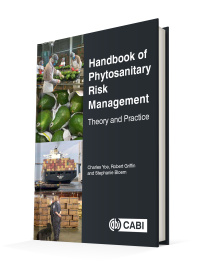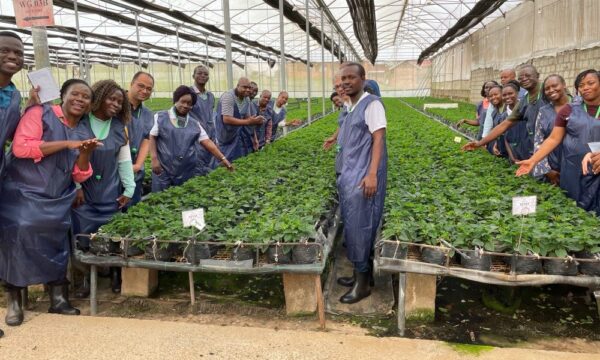
International trade in plants and plant products has transformed the world in both positive and negative ways. The introduction of destructive non-native pests is one of the negative consequences. Effectively managing pest risk associated with international trade while also promoting the benefits of trade is most effectively accomplished when it is a shared responsibility across the supply chain.
Before the SPS Agreement, the underlying philosophy of importing nations was that an ounce of prevention was worth more than a pound of cure. This resulted in a century of expanding port-of-entry controls based on inspection, followed by a regulatory action as the primary risk management strategy to prevent pest introduction.
The SPS Agreement challenged these notions with its revolutionary focus on risk as the basis for regulatory policies and actions. Phytosanitary risk management was no longer solely about the presence or absence of a pest in trade but rather its risk of introduction and subsequent damage.
The SPS Agreement created an environment in which the IPPC was able to promote adoption and implementation of the concept of systems approaches as a desirable option for risk management. It defines a systems approach as consisting of two or more independent risk management measures and as many dependent measures as needed. A systems approach offers the potential to consider risk mitigations across the entire plant or plant product supply chain, from production-to-disposition.
The second quarter century of phytosanitary risk management under the SPS Agreement would be well served by another shift in perception. There are many risk managers along the plant supply chain in both the public and private sectors. Three distinct risk management silos can be identified.
First, exporting nations take financial risks by initiating trade, hoping to reap uncertain potential benefits from trade, such as economic gains, new markets, and higher prices. Phytosanitary risk management is the second silo. It includes the risk management responsibilities of the world’s National Plant Protection Organizations (NPPOs) whose goal is to ensure that trade is safe from the risk of introducing harmful pests. The third silo is the responsibility of the importers who seek economic gain, product variety and lower prices.
In the past, these silos of exporter, importer, and phytosanitary risk have been managed separately by separate interests. There is more that unites these interests than that divides them and it makes more sense to consider these risks as part of a continuum, a vertically and horizontally aligned approach to international plant trade and plant protection. It is time for plant supply chain interests to begin to reimagine their respective risk management tasks as an interlocking system of plant trade and plant protection. Pest risk never has been a singular task. It has always been part of a greater system of moving plants and plant products around the world for the benefit of the humans and the natural environment. It is time that risk managers see and treat it as such.
Building on the existing systems approach concept enables vertically and horizontally integrated phytosanitary risk management that may involve more cooperative and collaborative opportunities for risk managers than heretofore imagined. Some specific initiatives that can incentivize and propel the international plant trade and plant protection community forward are:
-New risk management models and skills
-Partnerships
-Resource Allocation
-Technology.
There is little evidence of the use of formal risk management models in the relationship of international plant trade and plant health protection. One of the more promising opportunities for improved decision-making is for organizations to formally adopt broad risk management frameworks. These would increase awareness of the full range of related risks and opportunities for mitigation by all three silos. It would create opportunities for horizontally and vertically integrated risk management throughout the plant product supply chain.

New partnerships can emerge, grow and flourish. Government-industry partnerships offer opportunities to promote free, fair, and safe trade without compromising stewardship over plant life and health. Such partnerships provide the opportunity for better alignment of the risk management objectives of government and industry. Tearing down some of the walls and the mistrust between government and industry would have long term benefits for international trade, plant health, and consumers.
Risk management resources are rarely sufficient to manage all the issues that compete for the risk manager’s attention. An adversarial relationship between regulators and industry requires more resources than an effectively integrated risk management process would. A collaborative continuum approach to risk management can consider new ways of providing a given level of plant protection that simultaneously reduces the overall level of risk management resources required while increasing efficacy.
Technological advances like nanotechnology, genomic mapping, insect and microbial biotechnology, biosecurity, digital advancements, knowledge management, and the like can be expected to improve risk management outcomes. Revolutionary changes appear to be on the horizon. A horizontally and vertically integrated approach to risk management in international plant trade and health would be optimally poised to take advantage of this coming revolution.

Handbook of Phytosanitary Risk Management, by Charles Yoe, Robert Griffin and Stephanie Bloem, is now available on the CABI Bookshop.
Related News & Blogs
Biosecurity and skills development workshop brings together key players in Africa’s plant health ecosystem
CABI has convened a plant biosecurity training and skills development workshop bringing together key players in Africa’s plant health ecosystem keen to help the continent’s smallholder farmers improve their livelihoods and food security. The workshop w…
23 June 2025




